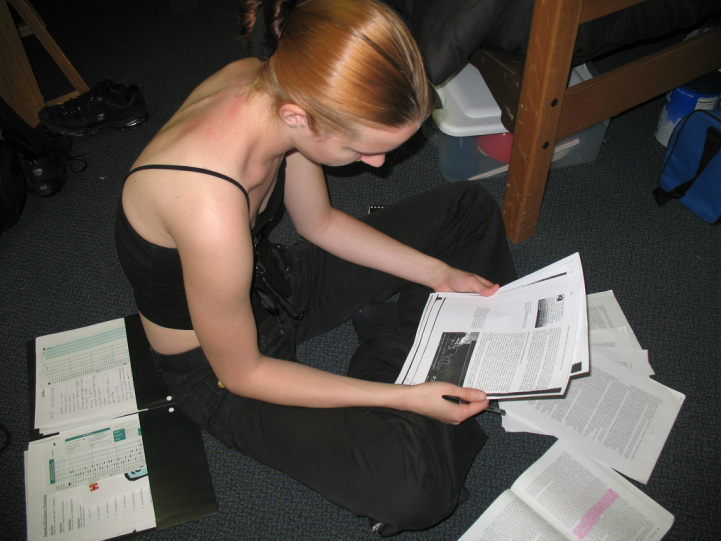|
10/10/2013 0 Comments Physicists Are Made, Not Born By Cate Mathews A study of one individual’s savant-like calculating abilities published two weeks ago by University of Sussex neuroscientists offers even more evidence to support the theory that impressive intellects are not innate but rather achieved through “zeal and hard work.” During the study, researchers analyzed the brain activity of “math supremo” Yusnier Viera as they asked him to perform a series of calculative tasks. His ability to quickly and deftly calculate the answers was reminiscent of that of people on the autism spectrum, but his methodologies and his ability to clearly explain them was not. Instead, researchers concluded that Viera over time and with much practice had begun to store computational information in and around the hippocampus, the area of the brain intended for long-term memory. In fact, they found that “his skills are not supported by [innate] neurobiological peculiarities and could be acquired by other people,” a thought that in and of itself could be very interesting to ambitious Scientistas. As paper co-author Dr. Natasha Sigala notes, “This is a message of hope for all of us. Experts are made, not born.” It’s an idea that stands in sharp contrast to superstitions common to nearly all scientific disciplines. The myth of the “10x programmer”, a team member supposedly inherently capable of producing code at ten times the rate of the least productive member, comes to mind in particular. The study in many ways builds on the work of Malcolm Gladwell’s 2008 Outliers, a book that argues that the difference between experts and non-experts, outliers and non-outliers, is not a matter of inborn talent but instead often a matter of accruing ten thousand hours of practice. Teenaged Bills Joy and Gates serve as prominent examples. It is difficult to imagine the world of computing without their adult counterparts’ contributions. Both Viera and Outliers, however, have a significant contribution to make to our understanding of women’s underrepresentation in STEM fields, and for that purpose Gladwell’s most relevant example is the first chapter’s hockey team rosters. Nearly every professional Canadian hockey player is born within the first four months of the year, Gladwell explains, most clustered around the annual January 1st cut-off date for age groups. A 10x child hockey player born on January 2nd would have almost a year’s advantage over any child born the next winter, and that year-long advantage is significant when young. Not significant enough to guarantee a future spot in the professional league, of course, but significant enough to warrant extra attention from the coach, increasing practice time, and access to more and more opportunities. The slight pre-adolescent advantage snowballs into a ten thousand hour difference and suddenly it’s a rarity to see midsummer birthdays on the university ice. This week the New York Times published an article by former Yale physics major Eileen Pollack about the disproportionate number of women studying or employed in STEM fields. Pollack recounts how in high school she was barred from taking accelerated physics and calculus courses because of her gender and how by the time she entered college, she was the only woman in her lectures. Although it was later revealed that she showed remarkable aptitude for the subject, she did not pursue graduate work in physics because of (systemic) lack of encouragement. Just like programmers, hockey players, and human calculators, 10x physicists are made, not born. They must be nurtured long-term, and high school and college are both too late to start. Ten thousand hour sprints rarely begin halfway through a bachelor’s degree. Interest in science must be fostered equally for all children and protected against any arbitrary cut-offs that might threaten it as they grow. Thankfully, progress is being made. Pollack, like Sigala and Gladwell before her, ends her article with genuine (if not entirely unrestrained) hope, surrounded by the next generation of Yale PhDs at a welcome back picnic. If these animated and determined graduate students are her successors, she looks forward to the potential future of their own. The chip she made in the glass ceiling will spider through the generations until it can bring the whole thing crashing down. But the battle isn’t won yet. If women are ever to truly achieve adequate representation in STEM, if more 10x physicists are to take up Pollack’s mantle, we must remain committed and unwavering in our resolve. Success, after all, is had through zeal and hard work- and we still have thousands of hours to go. About the Author: Cate Matthews is an avid writer and social media enthusiast with a direct IV line hook up to her RSS feeds. She loves articles about science, social justice, and tech in particular and considers herself a blossoming Scientista. When not quoting Neil Degrasse Tyson or experimenting with JavaScript (and sometimes even when), she can be found at @cateematthews. Comments? Leave them below!
0 Comments
Your comment will be posted after it is approved.
Leave a Reply. |
Archives
July 2022
CategoriesAll Amy Massack BiWeekly Roundup Danae Dodge Gabrielle-Ann Torre Indulekha Karunakaran Jeesoo Sohn Lauren Koenig Lidiya Angelova Melissa Bendayan Microsoft Molly Connell Nektaria Riso Nicole Hellessey Physics Poornima Peiris Robbin Koenig Sadaf Atarod Sarah Smith Shreya Challa Vijendra Agarwal Women In STEM Yolanda Lannquist |
The Network for Pre-Professional Women in Science and Engineering
The Scientista Foundation is a registered 501(c)(3) -- Donate!


 RSS Feed
RSS Feed